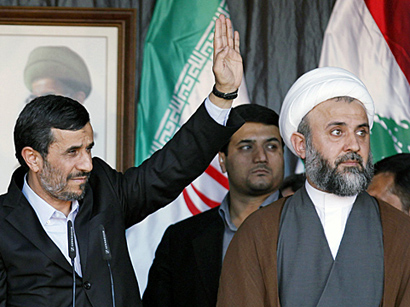Iran and Hezbollah, its Lebanese proxy, are building a network of militias inside Syria to preserve and protect their interests in the event that President Bashar al-Assad's government falls or is forced to retreat from Damascus, according to U.S. and Middle Eastern officials, Washington Post reported.
The militias are fighting alongside Syrian government forces to keep Assad in power. But officials think Iran's long-term goal is to have reliable operatives in Syria in case the country fractures into ethnic and sectarian enclaves.
A look at the Syrian uprising nearly two years later. Thousands of Syrians have died and President Bashar al-Assad remains in power, despite numerous calls by the international community for him to step down.
A senior Obama administration official cited Iranian claims that Tehran was backing as many as 50,000 militiamen in Syria. "It's a big operation," the official said. "The immediate intention seems to be to support the Syrian regime. But it's important for Iran to have a force in Syria that is reliable and can be counted on."
Iran's strategy, a senior Arab official agreed, has two tracks. "One is to support Assad to the hilt, the other is to set the stage for major mischief if he collapses."
The officials spoke on the condition of anonymity to discuss intelligence matters.
The fragmentation of Syria along religious and tribal lines is a growing concern for neighboring governments and the administration, as the civil war approaches its third year with little sign of a political solution or military victory for either Assad's forces or the rebels.
Rebel forces, drawn largely from Syria's Sunni majority, are far from united, with schisms along religious, geographic, political and economic lines. Militant Islamists, including many from other countries and with ties to al-Qaeda, are growing in power.
Kurdish nationalists have their own militias, with control over major swaths of the northeastern part of the country and in parts of Aleppo. They are far more interested in autonomy than in an alliance with either side in the conflict. Minority Christians have largely sided with Assad, fearing the outcome of an Islamist victory. Syria's 700,000 Druze, followers of an offshoot of Shiite Islam, are increasingly leaning toward the rebels.
Despite U.S. efforts to convince members of Assad's Alawite sect, itself a minority within Islam's Shiite branch, that their interests lie in abandoning him, Alawite support remains fairly solid.
Each of Syria's internal actors has external backers.
"Syria is basically disintegrating as a nation, similar to how Lebanon disintegrated in the '70s to ethnic components, and as Iraq did," said Paul Salem, director of the Beirut-based Middle East Center of the Carnegie Endowment for International Peace. "It's going to be very hard to put Syria the nation back together."
"We're looking at a place which is sort of a zone, an area called Syria, with different powers," Salem said.
Iran has a history of profiting from chaos, even without control of the government ostensibly in power. Hezbollah arose out of the Lebanese civil war of the 1970s, when Iran was able to exploit the grievances of that country's Shiite population, a pattern it also followed in Iraq during the chaos that followed the U.S. invasion.






